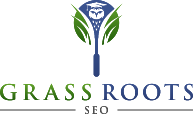Branding For SEO
BRANDING BASICS ON THE WEB
Branding, or brand marketing, is a basic concept in marketing. Essentially, branding involves marketing materials and tactics that help to build and maintain an image with a company’s, or website’s, target market. Branding on the Web is about building recognition of a website, and giving visitors or customers a specific feeling or attitude about the site, based on the message the owner wants to convey. Examples of online branding materials include:
1. A website’s official name.
2. A domain name.
3. A logo.
4. A color scheme.
5. Packaging materials on any products being sold.
6. Images on banner ads for the site.
7. A site slogan.
Building brand recognition, even online where branding materials can be in front of a target market regularly, takes time. Here are some keys to effective branding online:
1. Ensure that all online branding elements actually appeal to the target market.
2. Online branding materials should be memorable, and should portray the company’s intended image.
3. A website’s message to its target audience should be consistent throughout all of its branding materials.
Building a brand image for a website or online business isn’t enough. A webmaster or business owner has to constantly reinforce their branding efforts with their target market. Here are some Internet marketing tactics that help to reinforce brand marketing efforts:
1. Online Advertising (Using the company logo, slogan, color scheme, and message in advertisements when possible keeps a brand visually in front of members of a target market.)
2. Email Marketing (Including a logo and slogan on all email correspondence reinforces branding, while regular communication with members of a target market keeps that message fresh in their minds.)
3. Online PR (Announcing regular news related to a website through press releases or blogging can keep a website’s name and message in front of the target audience. It also provides a way to build and maintain trust in a brand by letting webmasters and online business owners display their expertise in the niche through blog posts and press release quotes.)

A seasoned digital marketing professional with over 20 years of expertise in digital marketing, search engine optimization, search engine marketing, brand development, conversion optimization, lead generation, web development and data analytics. He is a strategic digital marketing thought leader in a multitude of business verticals including automotive, education, financial services, legal marketing and professional services.
